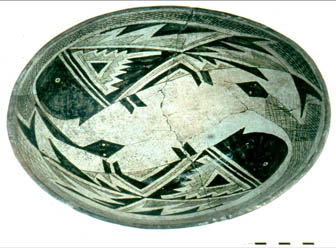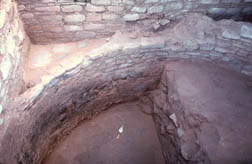The archaeology program at ASU is known for doing theoretically informed, problem-oriented empirical research. In other words, we ask questions that are of broad anthropological significance and we address them systematically with data. This is the kind of approach recently dubbed “Processual-Plus.”
"Archaeology of the social realm"—which includes social organizational forms as well as social processes such as leadership, identity, and boundary maintenance—epitomizes this approach. At ASU, we do the archaeology of the social realm with myriad kinds of data, drawing on contemporary social theory as well as ethnographic studies. Some examples include:
— Research on the nature and organization of polities and hierarchy in northern Mexico and the Southwest by Michelle Hegmon, Ben Nelson, and Keith Kintigh. Much of this work draws on settlement and architectural data, and has been greatly informed by collaboration with ethnographer Elizabeth Brandt who did pioneering work on the nature of secrecy and hierarchy in the pueblos.
— In depth reconstruction of the social, political, ceremonial, and ritual-economic practices and organizations of Hopewell societies of the Eastern Woodlands, their histories, and the role of religion in their origin, operation, and demise. Christopher Carr, Jane Buikstra, and Katherine Spielmann each contribute to these studies, using mortuary remains, iconography, art, ceremonial paraphernalia and architecture, and landscapes of sacred sites and places.
— Identity formation and manipulation is a focus of research by Jane Buikstra, Kelly Knudson, Rachel Scott, and Christopher Stojanowski. They combine a range of bioarchaeological (including biogeochemistry, human morphology, and paleopathology), archaeological (such as mortuary remains, settlement patterns, and iconography), and ethnohistorical data. This research considers identity at many social levels and in many areas of the world, including Knudson’s focus on the individual in the Andes of southern Peru and northern Chile, Scott’s work on the individual and community in medieval Ireland, and Stojanowski’s analysis of population-level ethnogenesis in the Southeastern United States, and Jane Buikstra’s research on identity formation and manipulation at the ancient Maya site of Copán and in the Andes.
— Analyses of social interaction, including integration, competition, and boundary maintenance in the US Southwest, as well as between societies in the Southwest and Mesoamerica. This work draws heavily on ceramic data as well as settlement patterns, exchange, and architecture. It is a major focus of many of the Southwest archaeologists at ASU. The study of social interaction is a major focus of a large NSF-Biocomplexity program funded study concerned with comparing five areas across the Southwest and northern Mexico.
 — Study of community formation and (sometimes) dissolution. This has been a major focus of Kintigh and his students’ work in the Zuni region of the Southwest, and it draws on a myriad of data including ceramic style and sourcing, settlement patterns, and architecture. Ben Nelson works in a frontier region of Mesoamerica where many large centers arise and dissolve and in which evidence of social violence is abundant.
— Study of community formation and (sometimes) dissolution. This has been a major focus of Kintigh and his students’ work in the Zuni region of the Southwest, and it draws on a myriad of data including ceramic style and sourcing, settlement patterns, and architecture. Ben Nelson works in a frontier region of Mesoamerica where many large centers arise and dissolve and in which evidence of social violence is abundant.
Many of these themes are also explored by ASU archaeologists working with complex societies and those whose work is described in the political economy theme.
© 2007, School of Human Evolution & Social Change, ASU (revised 9/4/2007)